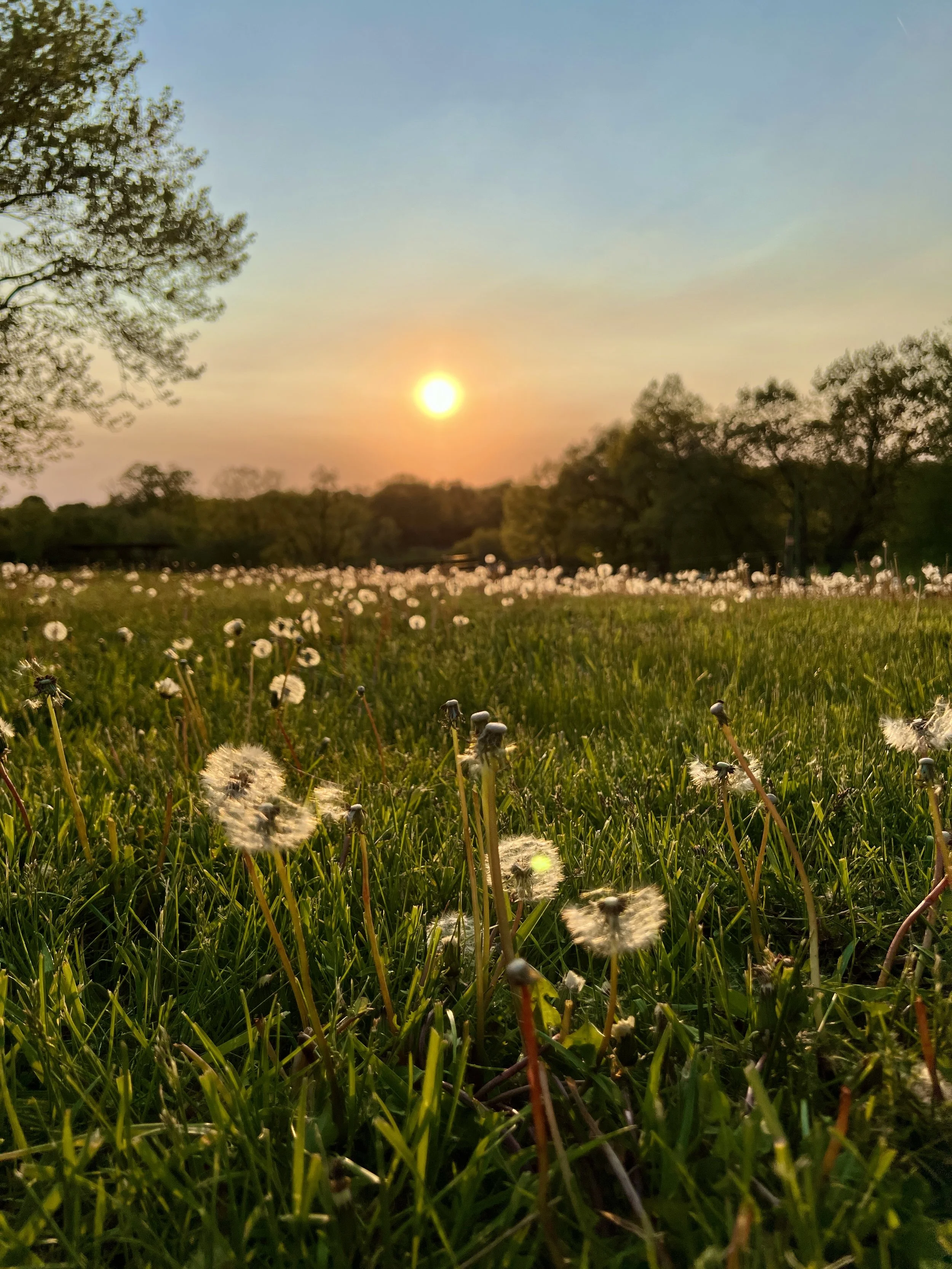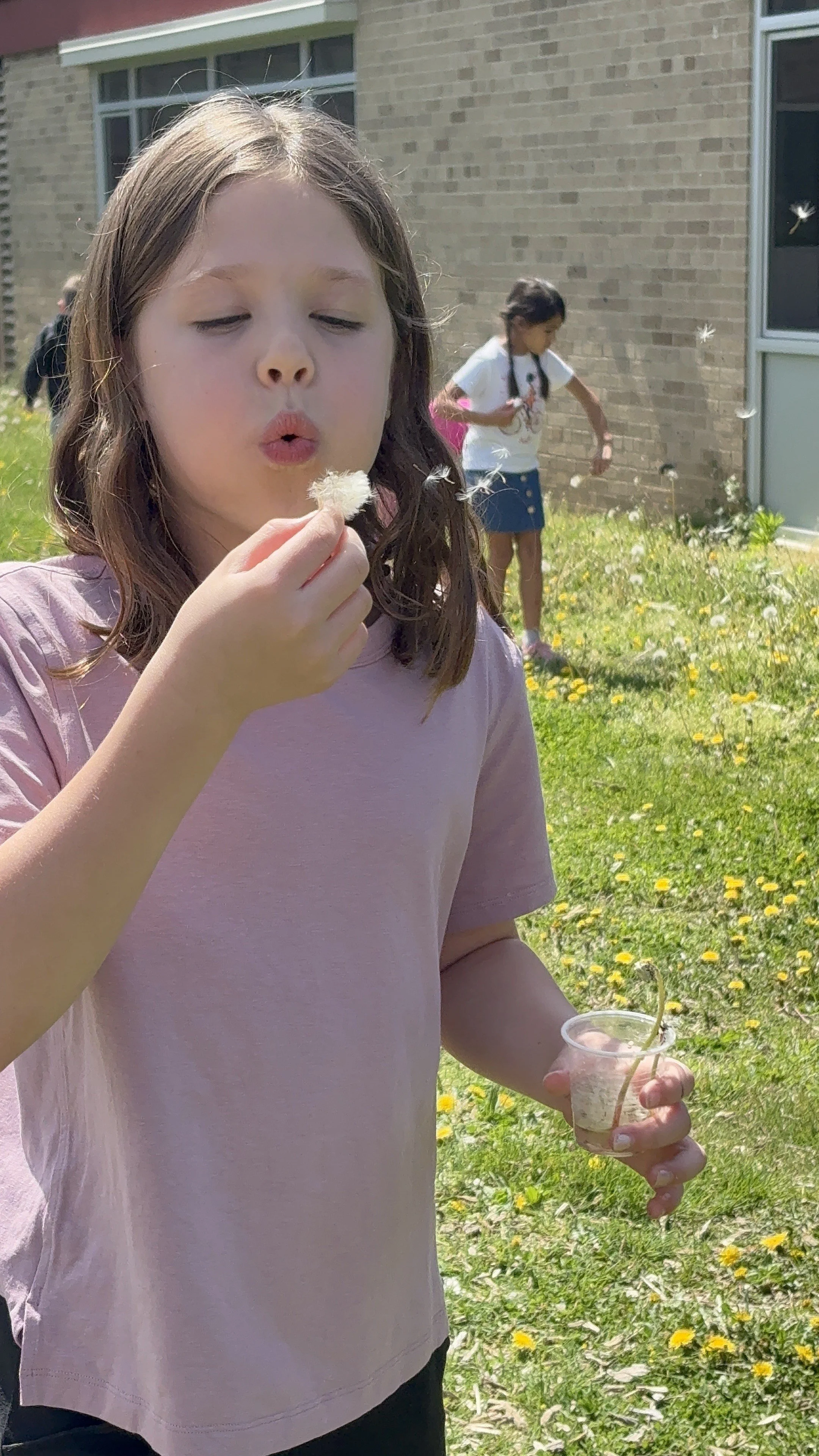A Case For Dandelions
Written by Christie McGraw, Educational Guide at Bowers School Farm
The dandelion seems to be making a case for itself. As an Educational Guide at Bowers School Farm, I have been noticing these bright yellow glimmers of dandelion hope during our Plants Program with second graders from Bloomfield Hills Schools. The story always seems to start the same. I deliver a lesson about how we can’t pick anything in the farm production garden space while we explore. Then, an exuberant hand shoots into the air and a student confidently says, “But we can pick the dandelions, right?”
This question used to be met with a chorus of children in agreement that dandelions were meant for picking. Now, I’m hearing other comments being whispered back.
“Did you know you can eat dandelions?”
“Are dandelions weeds? Or are they flowers?”
“My Mom says you can make tea with them!”
Ralph Waldo Emerson once said, “What is a weed? A plant whose virtues have not yet been discovered.” In modern American suburban culture, there are not many people looking for the virtues of this tiny plant. They are, undoubtedly, there though. Dandelions are edible and nutritious. They are rich in vitamins A, C, and K. Herbalists use dandelions medicinally to detoxify certain organs and to improve kidney function. They are some of the earliest bloomers in the spring so they are vital for pollinators. They have seeds that are shaped like parachutes that can travel up to 5 miles to populate an area. And even when faced with having their title of “wildflower” swapped with “weed” by some, they remain small superheroes spread over countless landscapes and lawns in the spring.
What might be the most endearing quality of this plant is her ability to not only endure, but to fix. A dandelion is a pioneer plant. Pioneer plants are the first ones to colonize in disturbed areas. In the wake of a wildfire or other act of destruction, the dandelion rushes to the scene and plunges her taproots deep into the soil. These roots break up the soil allowing water and air to permeate more easily. Her roots also drink up nutrients from lower layers of earth and bring them to the surface where more shallow-growing plants can use them. As the wise Fred Rogers once said, “When I was a boy and I saw scary things on the news, my mother would say to me, “Look for the helpers. You will always find people who are helping.” And there she is… the fire rages… the flood rushes…the mighty golden flower floats in.
When I was a little girl, I would tell my Dad not to cut our lawn in the spring. We would watch winter slip away and green spread across the neighborhood. Then, as if someone waved a pixie dust filled wand, golden flowers would appear everywhere. Our lawn became more wildflower than grass. My Dad and I both knew this magic wouldn’t last. Soon the yellow would turn to puffs of white and be gone. So, being the environmentalist and loving parent he was, my Dad would let the dandelions be. Together, we would watch them burst in and drift away every year. They marked time and held meaning for us. Now, my husband is the one who doesn’t cut the lawn during dandelion season to preserve this sentimental cycle. We soak up magic while it thrives.
Dandelions hold meaning for children too. They might be the catalyst for a first real wish. They are there the first time a toddler closes their eyes and determinedly fills their lungs with dreams and enchantment. They are a crown of loosely tied stems and flowers for an afternoon of imagination. And for adults, they might be a tightly held bouquet that is handed to Mom and popped into a little cup of water near the kitchen sink. Each shining flower reassures her that her little loves were thinking of her even when they were away. Dandelions are the helpers, the fixers, the magic makers, the healers, and reminders that there is beauty and resilience in the smallest, most overlooked and misunderstood parts of our world. Regardless of their title as a weed or flower, they are rooted into the lore and story of this hope-filled, imperfect planet.




